I want to optimize a parallax scrolling view with multiple large Bitmaps. On my Nexus 5, everything is smooth and the Traceview dump looks like this:
The doFrame() method uses ~18 ms to finish.
However, when using my Nexus 7 or an Android 6 Emulator (Genymotion), the Traceview dump looks like this:
The nSyncAndDrawFrame method now takes ~300 ms when running the exact same application.
The interesting code part is in onDraw() of the parallax view:
for (int i = 0; i < parallaxConfigManager.getNumberOfLayers(); i++) {
Bitmap layer = parallaxConfigManager.getLayer(i);
float dx = (offset * parallaxConfigManager.getScrollSpeedFactorForLayer(i) * imageScaleFactor);
int offset = Math.round(-parallaxConfigManager.getBoardOffset(i) + dx);
srcRect.offsetTo(offset, 0);
int realWidth = getRealWidth(srcRect, layer.getWidth());
float scaleFactor = destRect.width() / (float) srcRect.width();
if (realWidth < srcRect.width()) {
destRect.left = (int) (scaleFactor * Math.max(0, -srcRect.left));
destRect.right = destRect.left + (int) (scaleFactor * realWidth);
}
destRect.bottom = Math.min(screenHeight, (int) (scaleFactor * layer.getHeight()));
canvas.drawBitmap(layer, srcRect, destRect, paint);
destRect.left = 0;
destRect.right = screenWidth;
}
However, this code is fast enough. The slow part is in Androids native nSyncAndDrawFrame().
What could be the problem here? Is there a way to look deeper into this problem? Right now this method is a black box, because I can not see the native call stack.

